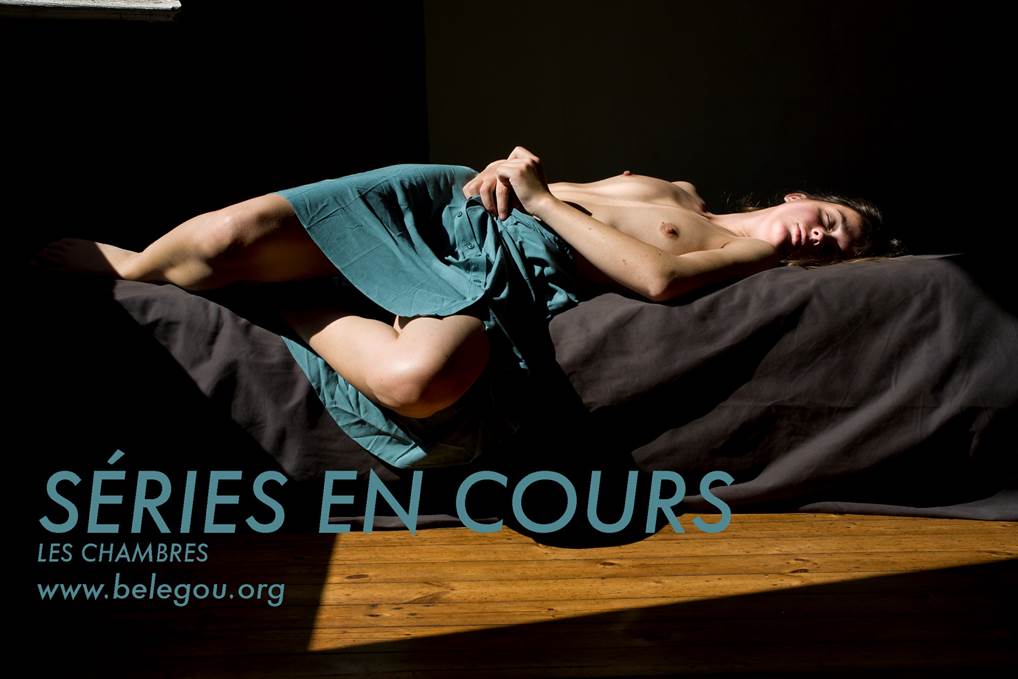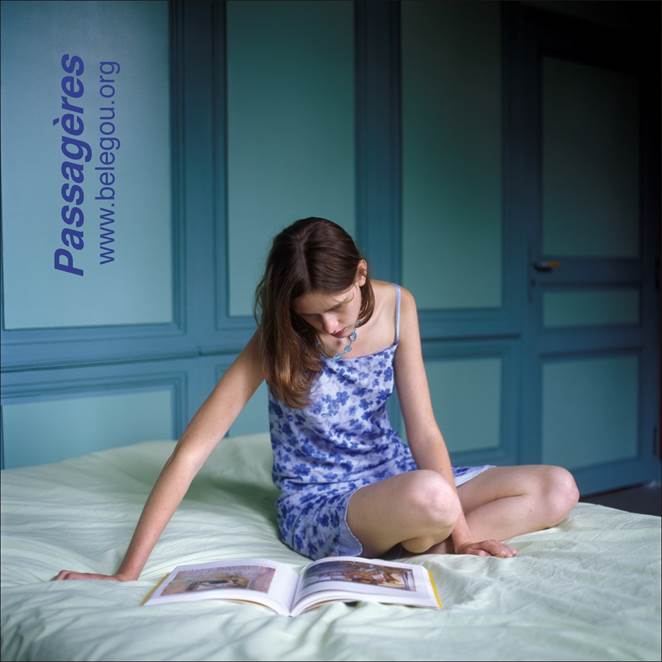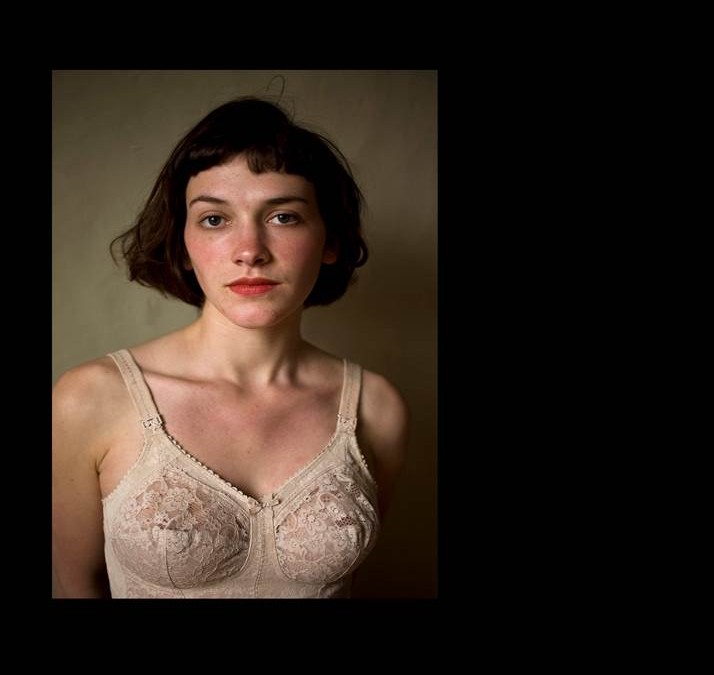A portrait from Jean-Claude Bélégou’s series “Studies/Humanities”, a continuation of his “procession of the ’70s young models.”
Jean-Claude Bélégou:
* * *
Yesterday as Today
Jean-Claude Bélégou :
1969 Primitives – 2013 “Studies / Humanités”
Fotoforum, Innsbruck, From May 29 thru July 9, 2015.
By Jean-Paul Gavard-Perret
Contributing Columnist
In 1968, after fifteen years in a Youth House, the artist discovers the mysteries of the darkroom. He forgets the time, all is forgotten, and leaves out through an emergency exit, walks more than ten kilometers to his relatives’ house. He leaves high school to attend a school for fine arts and continues to photograph. He participates in the reflection group on film at the cinema unit of the House of Culture of Le Havre. There he makes a short 16 mm film and an alternative picture story. He militates in the leftist movement in post May ’68 period, while resuming studies in philosophy. He uses a 6 x 6 Semflex camera to make his first “primitive” photographs: snapshots from life, studio portraits (in which he scrolls school friends), and home portraits (the artist carries his equipment on his bike).
Faced with the neo-positivist American documentary photography, against the legacy “leftist” neo humanistic photography, the photographer finds himself, as he writes, making photos that combine “the frozen primitivism” of photography in the Nineteenth Century, and the German photography of the ’20s.” With “Studies/Humanities,” the artist returns to fundamentals, such as the “procession of models of Wednesday afternoon in the ’70s.” He cites the influence of philosophers, writers and filmmakers, including: Apollinaire, Nerval, Hegel, Freud and Jen-Luc Godard, among others.

He finds shady and melancholic shades that break with the bright and sunny colors, “With this kind of tragic-dionysiaco enjoyment and sometimes lyricality” of his previous color series in a kind of earthly Norman paradise. The color becomes an almost monochrome chiaroscuro of the gray days of northern light, capturing some sadness in the world.
There is a realistic dimension, even verismo, here, but subtly symbolist. More or less clothed or unclothed, suitable nude portrait of the female body at rest, seized as the result of a thought, more than a feeling. The creator confronts the naked or undressed as sublimation language. Lighting effects sculpt the body, as if to grasp the rainbow sky after the storm. The photographer never allows  pure fantasy: he shifts angles without falling into specious speculation or pretentious rants where mysticism obscures the subject. The woman remains herself, rather than becoming an evanescent idol.
pure fantasy: he shifts angles without falling into specious speculation or pretentious rants where mysticism obscures the subject. The woman remains herself, rather than becoming an evanescent idol.
The body becomes more charming as it moves away from the effects. The woman no longer has anything it: it is what it is, poetry in the most simple abandonment. Each print seems impervious to the passage of time even if the artist seized the models in the seasons. Far from the artificial indifference of living statues, they plunge the viewer into an area where thinking is only spendthrift.
Shadow nuclei are combined. They are sometimes on the verge of revealing the most delicious dangers. Shadowy folds persist, paths paved by degrees – sometimes almost to the pubis. Threshholds that remain to cross. Great words of Love do not offer great remedies when these limits are exceeded, says Jean-Claude Bélégou. The artist takes delight, but remains on the reservation. Thus remains a diffuse disorder. Yesterday as today.


Recent Comments